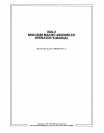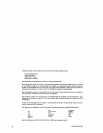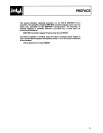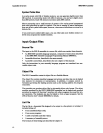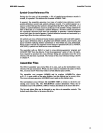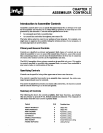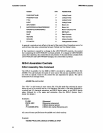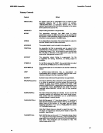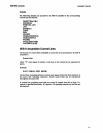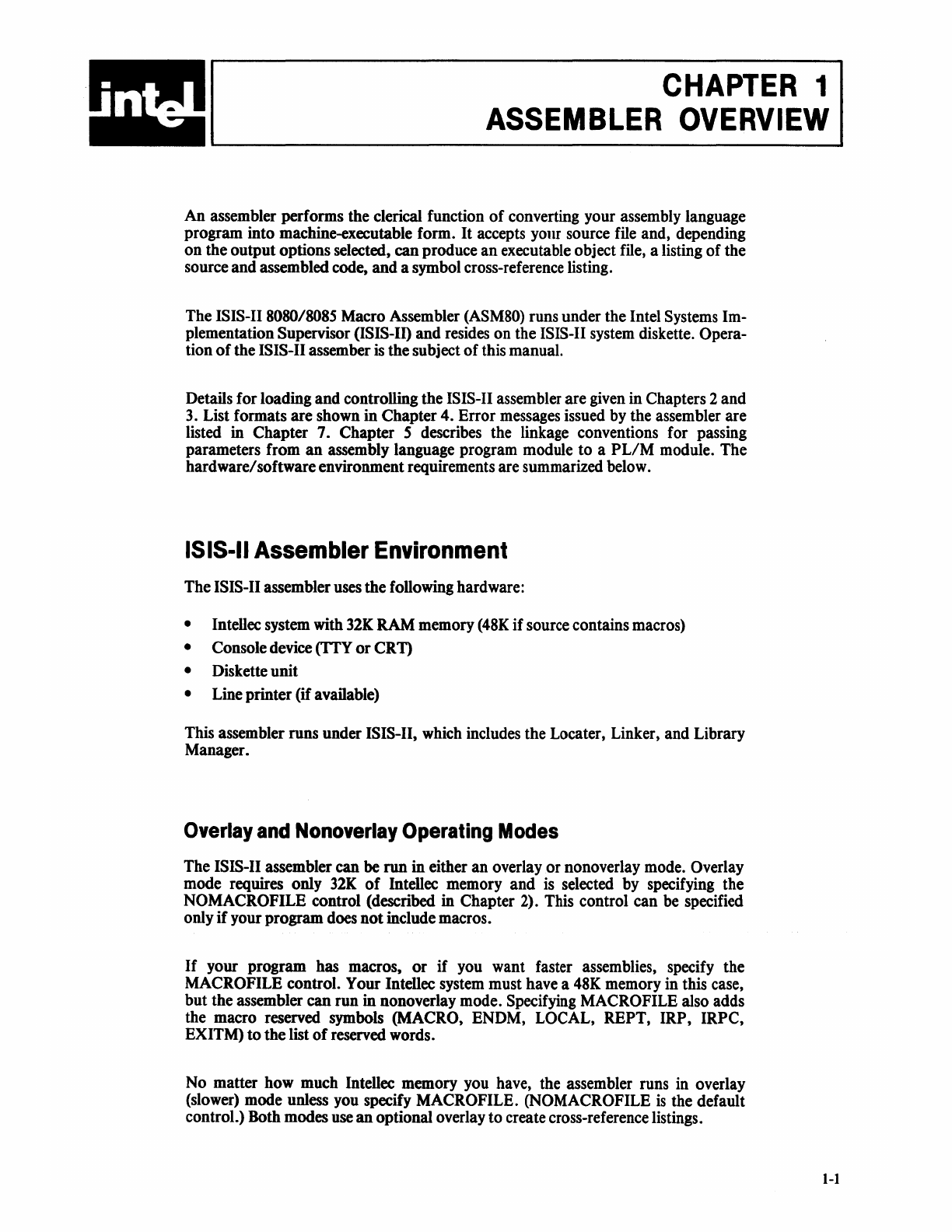
CHAPTER
11
ASSEMBLER
OVERVIEW
An
assembler
performs
the
clerical function
of
converting your assembly language
program
into
machine-executable form.
It
accepts your source file and, depending
on
the
output
options
selected,
can
produce
an
executable object file, a listing
of
the
source
and
assembled code,
and
a symbol cross-reference listing.
The
ISIS-II 8080/8085
Macro
Assembler (ASM80) runs
under
the
Intel Systems Im-
plementation Supervisor (ISIS-II)
and
resides
on
the
ISIS-II system diskette. Opera-
tion
of
the
ISIS-II assember is
the
subject
of
this manual.
Details
for
loading
and
controlling
the
ISIS-II assembler
are
given
in
Chapters 2
and
3. List formats
are
shown
in
Chapter
4.
Error
messages issued by the assembler
are
listed in
Chapter
7.
Chapter
5 describes the linkage conventions for passing
parameters
from
an
assembly language program module
to
a
PL/M
module.
The
hardwarel
software environment requirements
are
summarized below.
ISIS-II
Assembler
Environment
The
ISIS-II assembler uses
the
following hardware:
• Intellec system with
32K
RAM
memory (48K
if
source contains macros)
• Console device
(TIY
or
CRT)
• Diskette
unit
• Line
printer
(if
available)
This assembler
runs
under
ISIS-II, which includes the Locater, Linker,
and
Library
Manager.
Overlay
and
Nonoverlay
Operating
Modes
The
ISIS-II assembler
can
be
run
in
either
an
overlay
or
nonoverlay mode. Overlay
mode
requires
only
32K
of
Intellec memory
and
is selected
by
specifying the
NOMACROFILE
control
(described
in
Chapter
2). This control
can
be specified
only
if
your
program
does
not
include macros.
If
your
program
has macros,
or
if
you
want
faster assemblies, specify
the
MACROFILE
control.
Your
Intellec system
must
have a 48K memory in this case,
but
the
assembler
can
run
in nonoverlay mode. Specifying
MACROFILE
also
adds
the
macro
reserved symbols (MACRO,
ENDM,
LOCAL,
REPT,
IRP,
IRPC,
EXITM)
to
the
list
of
reserved words.
No
matter
how
much
Intellec memory you have, the assembler runs in overlay
(slower)
mode
unless you specify
MACROFILE.
(NOMACROFILE
is
the default
control.) Both modes use
an
optional overlay
to
create cross-reference listings.
I-I



